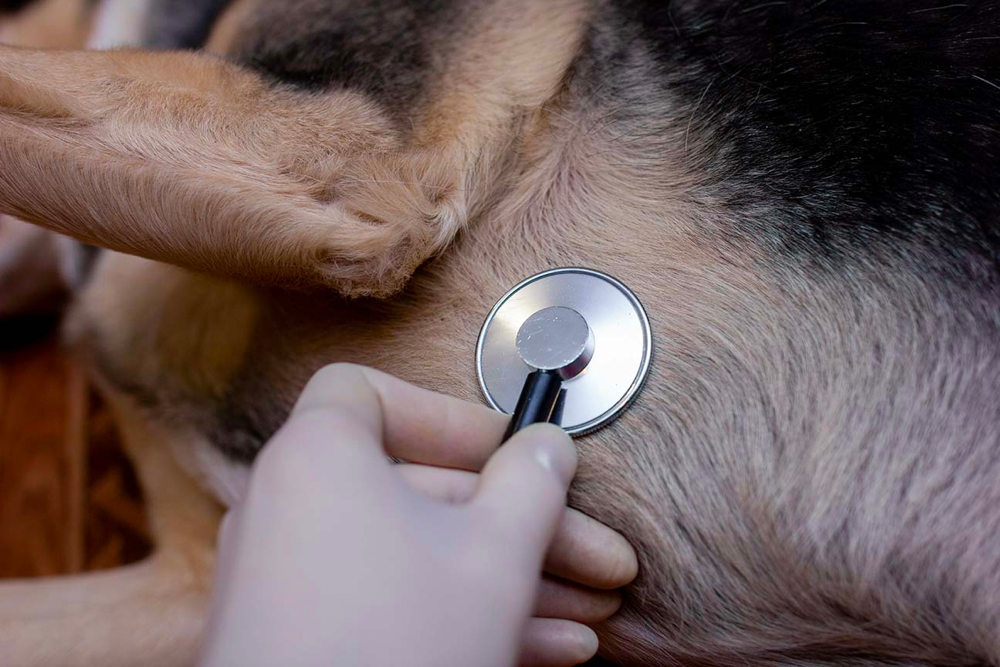Contents
Subaortic Stenosis SAS is the acronym for Subaortic Stenosis which is tagged as a common genetic and congenital disease of the heart affecting specific dog breeds like German Shepherds along with Great Danes, Newfoundland, Boxers, Golden Retrievers, Bulldog,s and Rottweiler. Often times SAS is detected at an early age by hearing the heart murmur. The presence of Subaortic stenosis (SAS) in German shepherds or in any other canine breeds is usually established by noticing an abnormal heart sound. The sound is much like that of the rushing fluid (blood) through one of the heart valves. While the normal sound should be just lub-dub of the heartbeats, in case of the presence of Subaortic stenosis (SAS) a whistle of blood flow through a narrow blood vessel is heard.

Before delving deep into the disease there’s a need to understand the anatomy of the heart in simple words. The right chamber of the heart receives impure, deoxygenated blood from all organs and pumps it to the lungs for picking up fresh oxygen inhaled by the animal. The purified blood is received by the left chamber and it is responsible for channelizing it to all other body parts. Since the left chamber is the blood supplier its walls are thick and strong. The left ventricle or the pumping chamber pumps the blood to the aorta, which is the largest artery of the body. There’s a valve that separates these two units – it is named the aortic valve. The left ventricle narrows down to enter the aorta and this area is called the aortic outflow tract.
Stenosis Means Narrowing
When the left ventricular tract lying just below the aortic valve has a scar-like narrowing (or stenosis) it leads to a condition that’s termed SAS. The area gets narrowed because of the presence of fibrous bands of tissues which are abnormal. Either these fibrous tissues are present from birth (congenital) or have an early development in the post-natal period.
The narrowing makes the blood-pumping process difficult; the left ventricle needs to exert greater pressure to pump blood through the narrowed passage. The blood forces its way out in the form of squirts and hence great turbulence is created within the heart chamber. This turbulence can be heard as a heart murmur on the left part of the chest.
Symptoms of SAS in German Shepherds?
When the vet hears the murmur in dogs, he or she becomes apprehensive of SAS in the animal. But it is not a definitive sign because there are many other clinical signs. In young puppies the stenosis is small (Grade I or II) but within the first 4-6 months of growth the stenosis enlarges and the heart murmur becomes more and more apparent. Puppies affected with SAS should be reevaluated when they are a year old in order to study and analyze the changes in cardiovascular status. Some other SAS symptoms are:
- Getting easily tired
- Coughing
- Spells of fainting (Syncope)
- Blue-tinged gums on body exertion
- SAS in a German Shepherd Dog Can be Severe
In SAS patients gradually there is a thickening of the walls of the left ventricle and there is also an enlargement of the ventricle because it needs to put in tremendous pressure to drive blood. This abnormal aortic valve hampers the heart’s electrical conduction and there is a disruption of its electric rhythm (or electrical arrhythmia). The pumping problem and the electrical disruption might even turn fatal. Hardly SAS patients outlive their third birthday. The Milder case of SAS in GSD or in other canine breeds is not considered a major medical issue, and the pet can enjoy a normal life span, with a slightly controlled lifestyle.
Radiograph Helps Diagnose SAS
The chance of heart failure can be identified with a chest radiograph. The clinical report shows dilation of the aortic valve (high-pressure squirting of blood is responsible for it). But the ideal test for SAS is ultrasound or echocardiography where the vet can measure the chamber size of the heart and the thickness of the wall. They study the correlation of the severity of stenosis with the pressure gradient.
The Ideal SAS Treatment
Beta-blockers (like atenolol) are the most effective drugs for treating SAS with the ultimate aim to normalize the exercising ability of the heart and help the animal enjoy a normal life span. The heart’s beta receptors that respond to epinephrine causes the heart to speed up its rate when exercising. The racing pulse leads to arrhythmia and frequent bouts of fainting. Beta-blockers are helpful in reducing the oxygen requirement of the heart. Surgery is a rare option; if it happens the surgeons excise the scar narrowing the passage. Balloon Valvuloplasty is another treatment for SAS that breaks down the scar and also dilates the stenosis.

 Von Willebrands Disease in German Shepherds: Symptoms, Causes, and Treatments
Von Willebrands Disease in German Shepherds: Symptoms, Causes, and Treatments